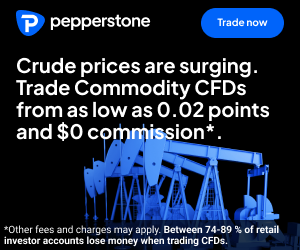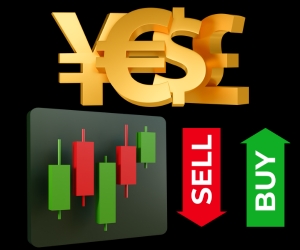FORWARD CONTRACTS AND THEIR ROLE IN FOREX
A forward contract in Forex is an agreement to exchange one currency for another at a fixed rate on a future date. These contracts allow businesses, investors, and traders to lock in today’s exchange rate to protect against future currency fluctuations. By removing uncertainty, forwards serve as a key tool for hedging international exposure, managing risk, and planning cash flows. In this article, we explain the basics of forward contracts, show how they are used to hedge, and outline the main considerations around pricing and risks.

Forward Contract Basics
Forward contracts are among the oldest and most widely used financial instruments in the global currency market. At their core, they are agreements between two parties to exchange a specified amount of one currency for another at a predetermined rate, with settlement set for a future date. Unlike spot transactions, which settle within two business days, forwards push the exchange into the future, allowing participants to lock in certainty today. This simple concept forms the foundation for a vast range of hedging and investment strategies, especially in Forex, where currency values can swing dramatically within short periods.
How Forward Contracts Work
In practice, a forward contract begins with two parties agreeing on the amount of currency to be exchanged, the settlement date, and the forward rate. The forward rate is not chosen arbitrarily; it is derived from the spot rate adjusted for the interest rate differential between the two currencies. This reflects the idea that money has a time value, and holding one currency versus another incurs an opportunity cost. Once agreed, the contract becomes legally binding, obligating both parties to deliver on the terms regardless of how the market moves in the interim.
For example, suppose a European importer agrees to pay a U.S. supplier $5 million in three months. To avoid the risk that the euro weakens against the dollar before payment is due, the importer enters into a forward contract to buy dollars and sell euros at today’s forward rate. Even if the euro depreciates sharply by the settlement date, the importer pays the agreed rate, ensuring predictability of costs. Conversely, if the euro strengthens, the importer forgoes a potential gain but enjoys the certainty of budgeting without surprises.
The Role in Forex Markets
In the foreign exchange market, forward contracts play a critical role in bridging the needs of corporations, banks, and institutional investors. Unlike retail spot trading, where positions can be opened and closed within minutes or hours, forwards serve longer-term purposes. Corporations use them to stabilise costs of imported goods or revenues from exports. Multinational firms use them to protect earnings against currency swings when consolidating financial statements. Even central banks and sovereign wealth funds engage in forwards to manage reserves and smooth the impact of volatile exchange rates.
Because they are customised agreements, forward contracts do not trade on standardised exchanges but over-the-counter (OTC), negotiated directly between counterparties. This allows flexibility in contract size, maturity date, and currency pairs, but it also introduces counterparty risk—the risk that one side may default on its obligation. For this reason, large players typically transact forwards through banks or broker-dealers, which manage credit risk through collateral requirements, margining, and internal limits.
Key Features of Forward Contracts
- Customisation: Forwards can be tailored to the exact amount, date, and currency needs of the client, making them more flexible than exchange-traded futures.
- No upfront cost: Unlike options, forwards do not require a premium payment. The cost is embedded in the forward rate itself.
- Binding obligation: Both parties are committed to settling at maturity, which provides certainty but removes flexibility if market conditions change.
- OTC nature: Forwards are bilateral contracts, creating exposure to counterparty risk that must be managed carefully.
Forward vs Spot and Futures
To understand the importance of forwards, it helps to contrast them with spot transactions and currency futures. Spot trades settle quickly and reflect immediate demand for a currency. Futures, by contrast, are standardised contracts traded on organised exchanges with daily margining and central clearing. Forwards sit in between: they are private, flexible, and long-dated, designed more for hedging than speculation. While futures are transparent and regulated, forwards dominate global currency markets because of their adaptability to client-specific needs. According to surveys by the Bank for International Settlements (BIS), forwards and swaps represent the bulk of daily FX turnover, dwarfing spot trades in value.
Market Participants
The primary users of forward contracts are corporations, institutional investors, and financial intermediaries. Corporations use forwards to stabilise cross-border cash flows. Pension funds and asset managers employ them to hedge foreign holdings or rebalance portfolios without liquidating assets. Banks act as both intermediaries and counterparties, providing forward quotes to clients while managing their own exposure through offsetting trades. For speculators, forwards offer less appeal than spot or options, but some professional traders use them to express long-term macroeconomic views on currency movements.
Advantages of Forwards
The greatest advantage of a forward contract is certainty. By locking in a rate, participants remove uncertainty about future cash flows and can plan with confidence. This is particularly valuable in industries where margins are tight and volatility can erode profitability. Forwards also provide a hedge without requiring upfront costs, unlike options, making them accessible to firms seeking cost-effective risk management. Furthermore, the flexibility of OTC contracts allows tailoring that exchange-traded products cannot provide.
Limitations
The flip side of certainty is inflexibility. Once a forward is signed, both parties are bound to its terms, regardless of how the market evolves. If the hedged currency moves favourably, the hedger cannot take advantage of the gain. Moreover, the bilateral nature of forwards exposes participants to credit risk, which can become significant in times of financial stress. Finally, pricing forwards requires understanding of interest rate differentials, which can be complex for smaller firms without specialised treasury staff.
Why Forwards Matter in Forex
Forwards are not simply contracts; they are building blocks of the modern Forex market. They enable global trade by reducing the uncertainty of cross-border transactions, support financial stability by managing exposure to volatile currencies, and contribute to the deep liquidity that defines the FX market. For traders and analysts, understanding how forwards function provides a window into the mechanics of currency flows and the strategies of major market participants. Even if not used directly by retail traders, forwards influence pricing and liquidity across spot and derivative markets, making them a vital part of the Forex ecosystem.
Hedging Uses
The primary purpose of forward contracts in Forex is hedging—protecting individuals, businesses, and institutions from adverse currency movements. Exchange rates can shift rapidly in response to interest rate changes, geopolitical events, or shifts in market sentiment. For those with international exposure, such volatility introduces uncertainty that can damage profitability, distort budgets, and complicate financial planning. By locking in a rate today for a future transaction, forwards allow participants to neutralise that risk and focus on their underlying business or investment objectives.
Corporate Hedging
Corporations engaged in cross-border trade are the most frequent users of forward contracts. Exporters hedge to protect the value of foreign revenues, while importers hedge to fix the cost of future payments. Consider a U.S. company that sells machinery to a client in Europe, with payment due in euros six months from now. If the euro weakens against the dollar in that time, the company would receive fewer dollars when converting the euros, eroding revenue. By entering into a forward contract to sell euros and buy dollars at a fixed rate, the firm secures its future income. The same logic applies to importers: a European retailer buying goods in dollars can fix the exchange rate to avoid the risk of rising costs.
Institutional Hedging
Pension funds, asset managers, and insurers also rely heavily on forwards. These institutions often hold diversified portfolios that include assets denominated in foreign currencies. For instance, a U.K. pension fund with U.S. stock holdings faces the risk that a stronger pound could reduce the dollar value of those investments. To protect returns, the fund can use forwards to lock in an exchange rate for future repatriation of dividends or capital. This practice, known as currency overlay, has become a specialised discipline in asset management, allowing institutions to separate currency risk management from underlying investment decisions.
Project and Infrastructure Finance
Large infrastructure projects, often financed in multiple currencies, also depend on forward contracts. A construction consortium in Asia, for example, might receive payments in local currency but owe debt service in U.S. dollars or euros. By using forwards, the consortium can ensure predictable debt payments regardless of local currency fluctuations. This is critical in emerging markets where exchange rates are often volatile and access to foreign capital is sensitive to global risk sentiment.
Hedging for Commodity Producers
Commodity producers, such as oil exporters, often face dual risks: volatility in both commodity prices and exchange rates. A Middle Eastern oil company that sells crude in dollars but reports earnings in local currency can use forwards to stabilise cash flows. By locking in a dollar-to-local-currency exchange rate, the company shields its revenue from swings in foreign exchange markets. This is particularly important in countries where governments rely heavily on resource revenues to fund budgets and public services.
Retail and SME Hedging
While large corporations dominate the forward market, small and medium-sized enterprises (SMEs) also use these contracts. For SMEs, currency risk can be existential: a single large invoice denominated in a foreign currency can threaten cash flow if exchange rates move unfavourably. Many banks and brokers now offer simplified forward contracts tailored to smaller businesses, giving them access to the same protection tools as larger players. Even high-net-worth individuals or small import–export firms use forwards to hedge specific exposures, such as tuition payments abroad or property purchases in foreign currencies.
Central Banks and Sovereigns
Even central banks and sovereign governments employ forwards. Central banks may use them to manage reserves, smooth exchange rate volatility, or coordinate with other monetary authorities. Sovereign borrowers issuing debt in foreign currencies may enter into forward contracts to hedge future interest or principal payments. In these contexts, forwards become part of a broader toolkit of macroeconomic stabilisation, ensuring that government finances remain predictable despite external shocks.
Advantages of Using Forwards for Hedging
- Certainty: Forwards eliminate uncertainty in cash flows, allowing accurate budgeting and financial planning.
- No upfront cost: Unlike options, forwards do not require premium payments, making them cost-effective.
- Flexibility: Contracts can be customised in size and maturity to match the hedger’s exact needs.
Trade-Offs and Limitations
Despite their utility, forwards are not without drawbacks. The biggest trade-off is opportunity cost: if exchange rates move favourably, the hedger cannot benefit, as they are locked into the forward rate. In addition, forwards expose parties to counterparty risk. In times of financial stress, the failure of a counterparty to deliver could undermine the very protection the contract was meant to provide. This is why corporations often transact through reputable banks and use collateral agreements to reduce exposure. Ultimately, forwards are a powerful but imperfect hedge, best used as part of a broader currency risk management strategy.
Pricing & Risks
Understanding how forward contracts are priced—and the risks attached to them—is critical for anyone using these instruments in Forex markets. While forwards are straightforward in concept (fixing a future exchange rate), the underlying mechanics involve interest rate differentials, counterparty considerations, and market conditions. Pricing errors or a poor grasp of risk exposures can turn a useful hedge into an expensive liability. In this section, we break down the essentials of forward pricing, examine the main risks, and highlight how traders and businesses can manage them responsibly.
Forward Pricing Fundamentals
A forward rate is not a forecast of where the spot rate will be in the future; it is a price determined by the interest rate differential between two currencies. The logic is grounded in the principle of covered interest parity (CIP). If one currency offers a higher interest rate than another, its forward value will be lower relative to its spot price, ensuring there is no arbitrage opportunity for investors. For example, if U.S. dollar interest rates are higher than euro rates, the forward price of the dollar against the euro will be set at a discount to spot.
The formula can be expressed as:
Forward Rate = Spot Rate × (1 + idomestic × T) / (1 + iforeign × T)
where i is the interest rate and T is the time to maturity. This ensures that the forward contract reflects the cost of carry for holding one currency versus another.
Market Drivers of Forward Pricing
Beyond interest rates, several factors influence forward pricing:
- Liquidity: Currencies with deep, liquid forward markets—such as USD/EUR, USD/JPY, and GBP/USD—typically have tight bid–ask spreads. Exotic currencies, however, may show wider spreads, raising costs.
- Tenor: Short-dated forwards (1–3 months) are generally cheaper and more liquid than long-dated forwards (1 year or more), where pricing incorporates greater uncertainty.
- Market Stress: During crises, deviations from covered interest parity can occur, leading to mispricings known as “cross-currency basis”. These episodes highlight how real-world frictions affect theoretical pricing models.
Counterparty Risk
Because forwards are over-the-counter (OTC) instruments, one of the most significant risks is counterparty default. If a bank or financial institution fails to honour its side of the agreement, the hedge collapses. This risk became highly visible during the 2008 financial crisis, when concerns about bank solvency disrupted the forward market. Today, collateral agreements, central clearing, and careful counterparty selection are common safeguards.
Opportunity Cost
Another risk inherent to forwards is opportunity cost. By locking in a rate, the hedger forgoes potential gains if the spot market later moves in their favour. For instance, an exporter who hedges euros at 1.05 EUR/USD might miss out if the actual rate at maturity rises to 1.15. The forward ensures certainty, but at the expense of flexibility. Some firms address this by combining forwards with options, creating hybrid strategies that balance cost with potential upside.
Liquidity and Exit Risks
Unlike exchange-traded futures, forwards are not easily transferable. Once entered, the contract typically runs until maturity. Exiting early may require negotiating an offsetting trade with the same counterparty, which can be costly. For businesses with shifting cash flow needs, this lack of flexibility can create liquidity challenges.
Legal and Regulatory Risks
Forward contracts are subject to varying legal and regulatory frameworks depending on jurisdiction. Some markets impose reporting requirements or restrict usage by non-financial corporates. Firms must ensure compliance, as breaches can carry reputational and financial penalties. Moreover, accounting rules determine how forwards are recognised on balance sheets, affecting earnings volatility and financial ratios.
Managing Risks Effectively
To manage risks, participants often adopt layered strategies. Common practices include:
- Spreading forward contracts across multiple maturities to avoid concentration at one settlement date.
- Using reputable counterparties and collateral agreements to mitigate default risk.
- Integrating forwards with other derivatives—such as options or swaps—for added flexibility.
- Monitoring market conditions closely to anticipate shifts in interest rate differentials and liquidity.
When Forwards Are Most Useful
Forwards shine in scenarios where certainty outweighs flexibility. An exporter securing predictable cash flows, a fund repatriating returns, or a government planning debt payments all benefit from fixed rates. Traders, however, may find forwards less attractive for speculative purposes due to their rigid structure. Ultimately, the value of a forward lies in aligning financial outcomes with strategic objectives—whether that’s stability, hedging, or disciplined planning.








